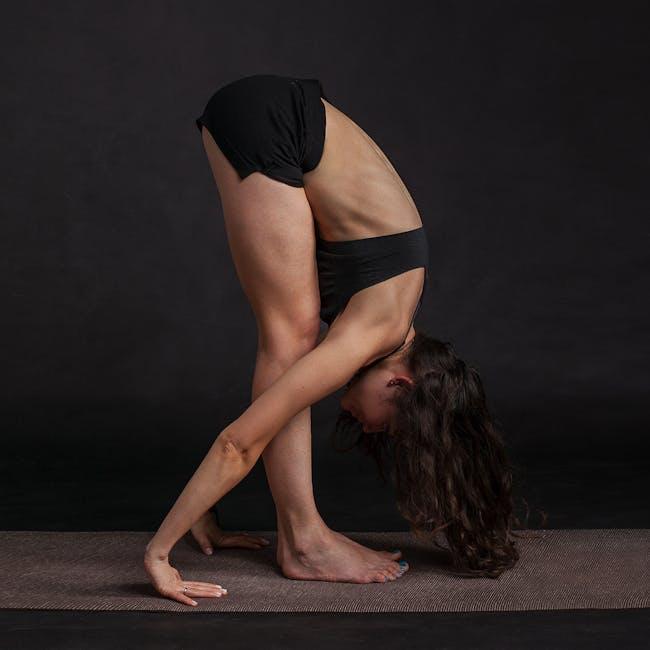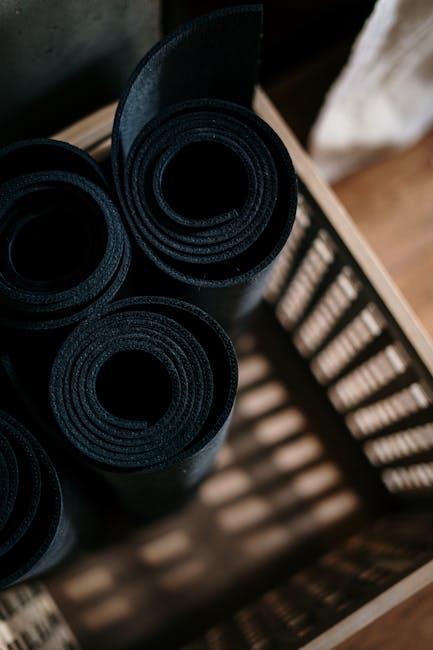In today’s fast-paced world, where our bodies often bear the brunt of our hectic schedules, finding time for self-care can feel like a luxury rather than a necessity. Yet, the simple act of stretching can transform not only our physical well-being but also our mental clarity and emotional balance. Whether you’re someone who spends long hours at a desk, an athlete looking to enhance performance, or simply someone seeking relief from everyday tension, embracing a regular stretching routine can unlock a new level of flexibility and freedom in your body. In this guide, we will explore the best stretching routines designed to suit a variety of needs and lifestyles. With empathy and understanding, we’ll walk you through each step, ensuring you can integrate these routines seamlessly into your daily life, paving the way for improved flexibility and a healthier, more resilient you.
Understanding Your Bodys Unique Flexibility Needs
Recognizing that everyone’s body is different is the first step towards developing a stretching routine that truly caters to your needs. Flexibility is not a one-size-fits-all situation; it’s influenced by various factors including age, genetics, and daily activities. Understanding these unique aspects can help you tailor a plan that not only improves your flexibility but also enhances your overall well-being.
- Age and Flexibility: As we age, our muscles naturally lose some elasticity. Incorporating gentle, consistent stretching into your daily routine can help maintain or even improve flexibility.
- Genetic Predispositions: Some people are naturally more flexible due to their genetic makeup. Understanding your genetic baseline can guide you in setting realistic goals.
- Activity Levels: Your daily activities play a significant role. Desk jobs may require more focus on hip and back flexibility, while athletes might need a broader range of stretches.
To better understand your body’s specific needs, consider keeping a flexibility journal. This can help track your progress and identify areas that require more attention. Here’s a simple table you might find useful:
| Day | Target Area | Notes |
|---|---|---|
| Monday | Lower Back | Felt tight in the morning |
| Wednesday | Shoulders | Improved range of motion |
| Friday | Hamstrings | Focus on consistency |
Embrace the journey of understanding your body’s flexibility needs. It’s a process of discovery that can lead to greater physical freedom and confidence.

Key Stretching Techniques to Target Tight Muscles
Stretching is not just about enhancing flexibility; it’s a vital practice for relieving tension and discomfort in tight muscles. To effectively target those stubborn areas, consider integrating the following techniques into your routine:
- Dynamic Stretching: Begin with movements that mimic your workout or daily activities. This helps in warming up the muscles, increasing blood flow, and preparing the body for more intense stretches.
- Static Stretching: After a workout, focus on holding stretches for 15-30 seconds. This method helps in lengthening muscles and increasing range of motion. Be sure to breathe deeply and relax into each stretch.
- Proprioceptive Neuromuscular Facilitation (PNF): This advanced technique involves stretching a muscle to its limit, contracting it for a few seconds, and then stretching it further. Often done with a partner, PNF is highly effective in improving flexibility.
| Technique | Best For | Duration |
|---|---|---|
| Dynamic Stretching | Warm-up | 5-10 minutes |
| Static Stretching | Cool-down | 15-30 seconds per stretch |
| PNF | Flexibility gains | 10-15 minutes |
Remember, the key is consistency and listening to your body. If a stretch feels painful, ease back and ensure you’re using proper form. Your body will thank you with improved mobility and reduced muscle tension.

Incorporating Flexibility Training into Your Daily Routine
Flexibility training is often the missing piece in many fitness routines, yet it can profoundly impact overall well-being. To seamlessly integrate it into your daily life, consider starting with a few simple practices. Morning stretches can invigorate your day, while evening routines can help you wind down. Here are some easy ways to incorporate flexibility training:
- Dynamic Stretching: Begin your day with dynamic stretches like arm circles or leg swings to warm up your muscles.
- Static Stretching: Incorporate static stretches such as the butterfly or seated forward bend post-workout to improve muscle elasticity.
- Active Isolated Stretching (AIS): Use AIS techniques, holding each stretch for only two seconds, to target specific muscle groups.
- Yoga or Pilates: Dedicate 15-30 minutes daily to yoga or Pilates, focusing on poses that enhance flexibility and core strength.
To track your progress and stay motivated, consider creating a weekly flexibility schedule. Here’s a simple example:
| Day | Activity |
|---|---|
| Monday | Dynamic Stretching (10 mins) |
| Wednesday | Yoga Session (30 mins) |
| Friday | Static Stretching (15 mins) |
| Sunday | Pilates (20 mins) |
Remember, the key to success is consistency and listening to your body. Start with shorter sessions and gradually increase intensity as your flexibility improves. Embrace this journey, and soon you’ll notice not only increased flexibility but also a more balanced and resilient body.

Expert Tips for Maximizing Stretching Benefits
Unlocking the full potential of your stretching routine requires more than just going through the motions. Here are some expert tips to ensure you’re getting the most out of your stretches:
- Consistency is Key: Aim to incorporate stretching into your daily routine. Consistency helps maintain flexibility and prevents stiffness.
- Warm Up First: Always start with a light warm-up, such as a brisk walk or gentle jogging. This increases blood flow to your muscles, making them more pliable and less prone to injury.
- Listen to Your Body: Pay attention to what your body is telling you. Stretch to the point of mild discomfort, not pain. Pushing too hard can lead to injuries.
| Stretch Type | Duration | Frequency |
|---|---|---|
| Static Stretching | 15-30 seconds | 3-4 times a week |
| Dynamic Stretching | 5-10 minutes | Before workouts |
| PNF Stretching | 10 seconds contraction, 20 seconds relax | 1-2 times a week |
By following these expert recommendations, you’ll be on your way to enhancing your flexibility safely and effectively. Remember, the journey to improved flexibility is a marathon, not a sprint. Keep stretching, stay mindful, and enjoy the process!








































